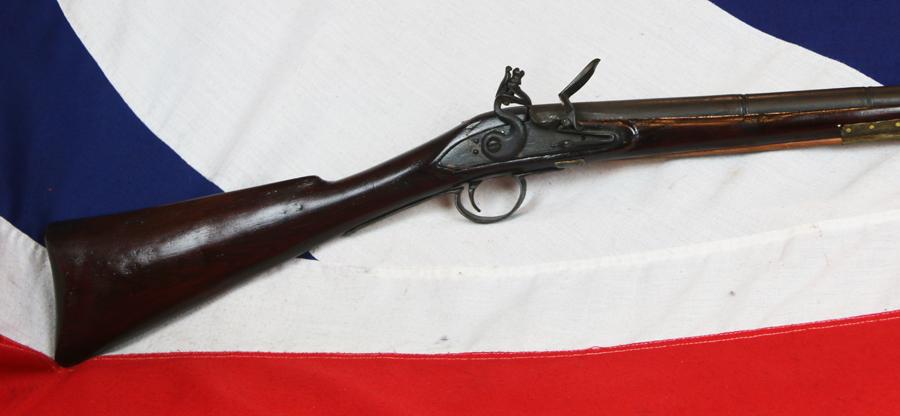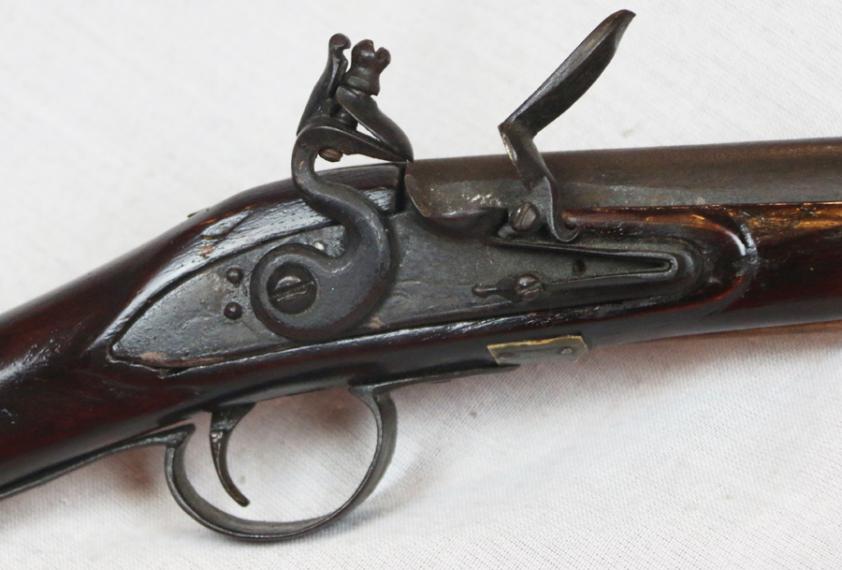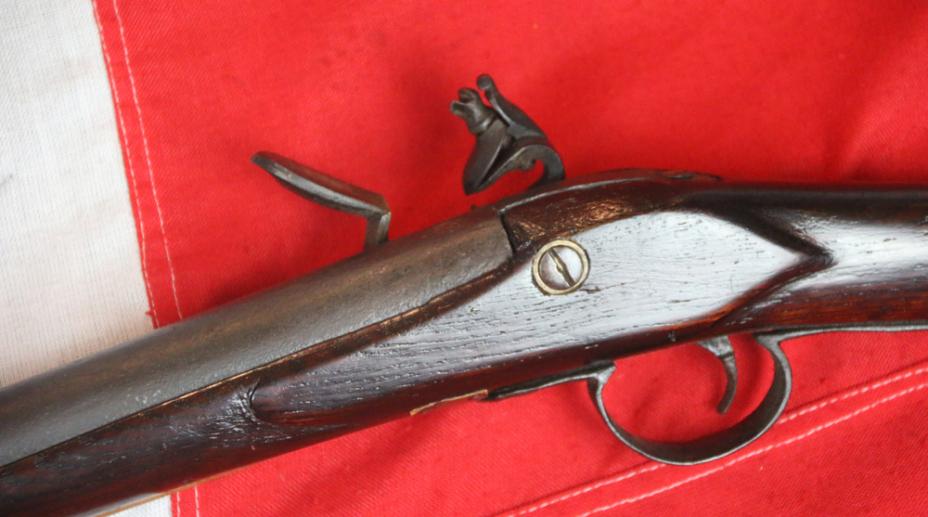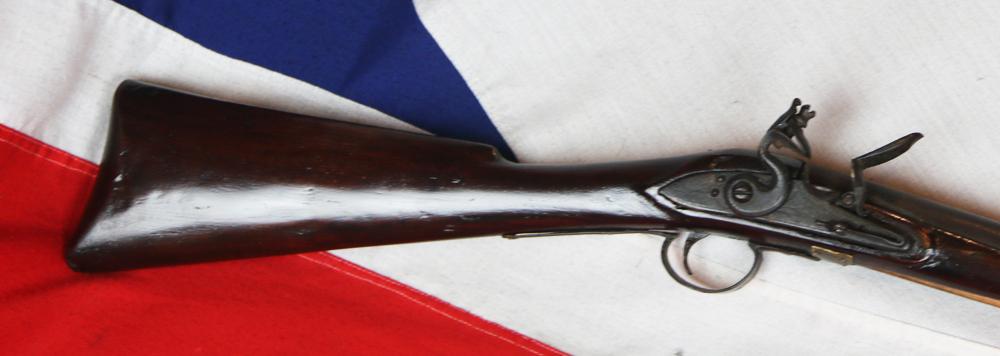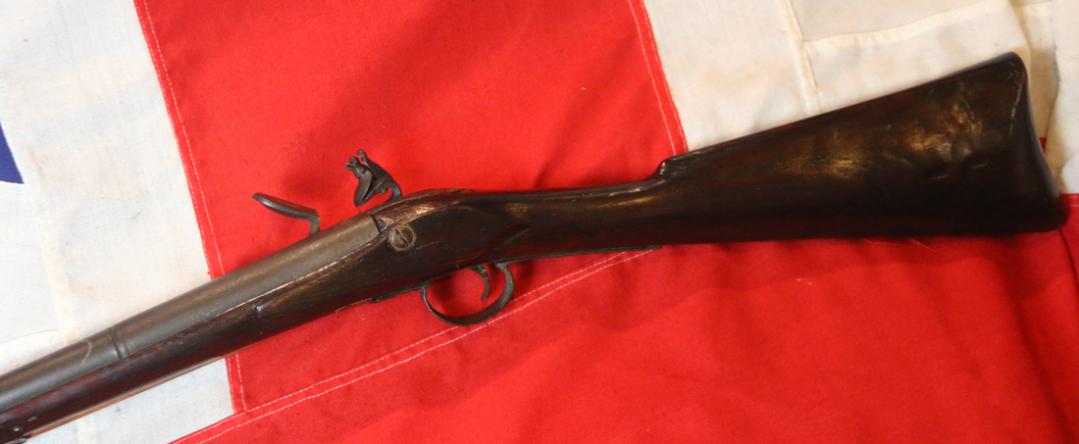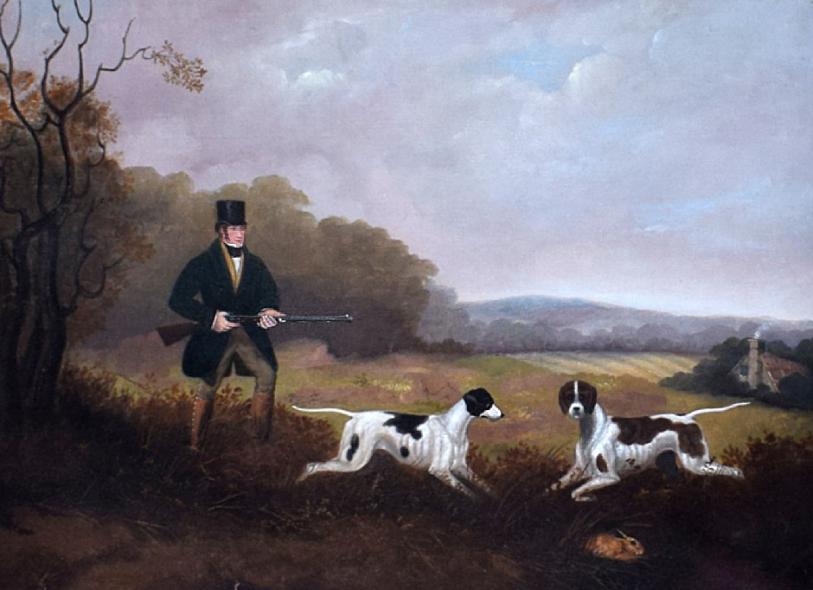An 18th Century Flintlock Long Barrel Sporting Musket
Absolutely perfect as an original decorative display piece for the right location. Nice stock, flintlock action [not actionable] 52.5 inches long overall. This would make a delightful original display piece for any suitable location. Under barrel brass plate strengthening supports.The royal forest was an area of land designated to the king for hunting and forestry; it included woodland, heathland, and agricultural land. As of the 12th century nearly a third of England's territory was assigned as royal forest. Only the king and other permitted members of the nobility were allowed to hunt game in the assigned area. To maintain this restriction, forest law was introduced to enforce the boundaries. Special officials known as foresters were in charge of overseeing forest law. The foresters were among the most hated of royal officials as they were often corrupt, having a reputation for making illegal side profits on royal forest property by farming, extracting natural resources, and poaching game. They exacted many punishments for poaching game, farming, and other illegal activities on the royal forest. Heavy fines and imprisonment were the common discipline. While foresters were in charge of the upkeep of forest law, sometimes the king would employ the local sheriff to get involved. Hunting, however, was not the only function for the royal forest. Kings would also use these territories for cattle upbringing, farming, and extracting the land's resources. They also notably served as reserves for all kinds of wildlife. King Henry I of England was known for having a fascination with pet animals. His parks included wild animals like lions and leopards. Forest laws in regards to hunting created class distinctions. King Richard II of England issued the first game law in 1390. It constituted a property requirement of certain value to have hunting dogs or other hunting equipment. During the Regency period, game birds were shot in different ways, though Driven Game shooting was popular on larger estates. Here, where beaters are employed to drive game towards a line of standing guns through woods and over moors or fields, dependent on the quarry and time of year. The total bag (number of birds shot) will be anywhere between 80 and 300, again dependent on quarry etc. The day will be very formal, and gamekeepers or a shoot captain will oversee proceedings. Pickers-up are also employed to make sure all shot game is collected. On such estates, large numbers of pheasants, partridge and duck, but not grouse, may be released to maintain numbers. Shotguns (also known as a fowling piece or scattergun) were improved during the eighteenth and nineteenth centuries and game shooting became more popular. To protect the pheasants for the shooters, gamekeepers culled vermin such as foxes, magpies and birds of prey almost to extirpation in popular areas, and landowners improved their coverts and other habitats for game. Game Laws were relaxed in 1831 which meant anyone could obtain a permit to take rabbits, hares and gamebirds.
Code: 23478
675.00 GBP

